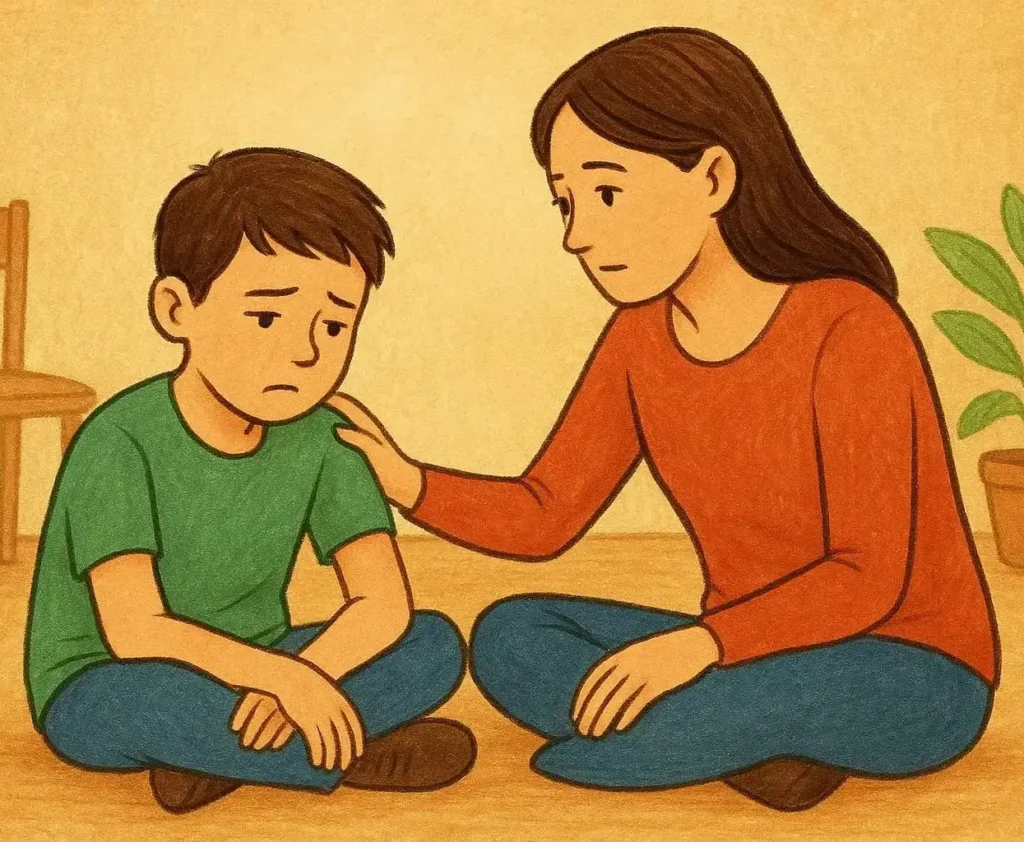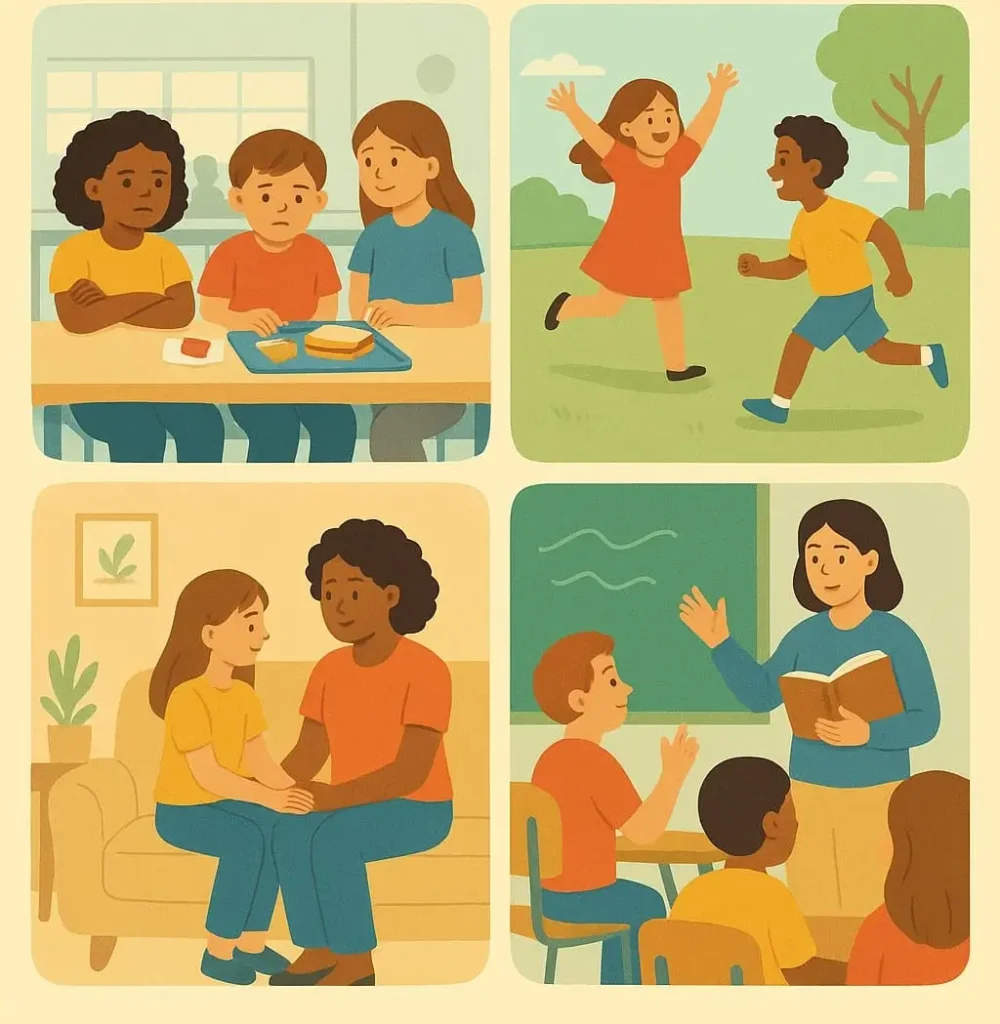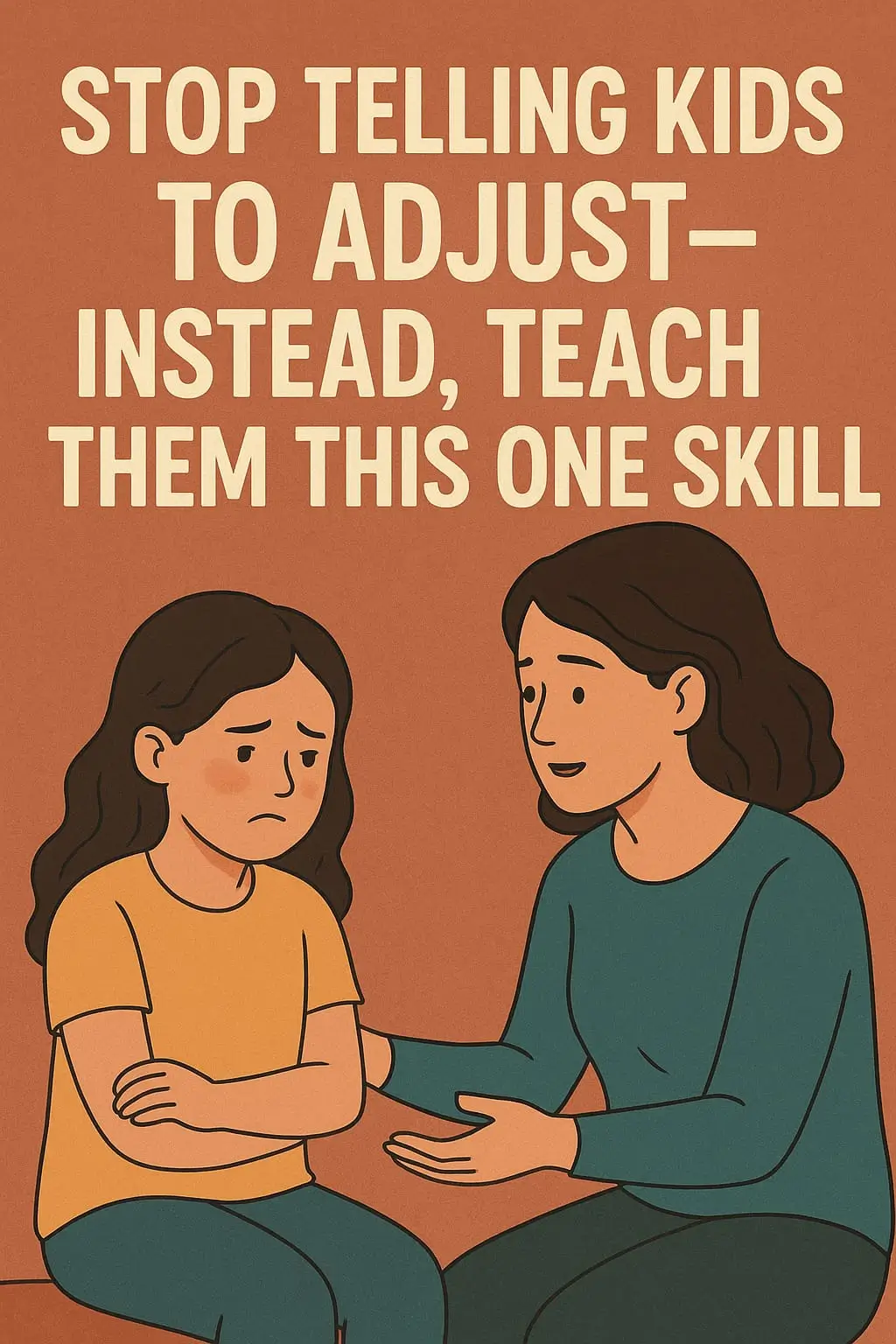Stop telling kids to “adjust” when life feels uncomfortable—but what if, instead of asking them to fit in, we taught them the one skill that helps them truly know themselves and the world around them?
Let’s start with a little story.
A few weeks ago, I overheard a mom at the park talking to her daughter. The little girl, maybe six or seven, had come running up with tears in her eyes.
“Mom, they won’t let me play!” she cried.
Her mom sighed and said, “It’s okay, ma. You have to adjust. Go back and play nicely.”
The girl wiped her face and slowly walked away.
Now, that mom wasn’t wrong. She wanted her daughter to handle social conflict — to be flexible, to “fit in.” But that one word — adjust — kept echoing in my mind.
Because here’s the thing: when we keep telling kids to adjust, we might be teaching them to silence their feelings instead of understanding them.
It was such a small, ordinary moment. But later that night, that word adjust echoing in my mind like a pebble dropped in still water.
The Word We Keep Using
“Adjust” is a word we toss around often, isn’t it?
We tell our kids to adjust when they change schools, when friends leave them out, when teachers seem harsh, when things don’t go their way.
We mean well — we want them to be resilient, to cope, to not crumble at every disappointment. But from a child’s perspective, “adjust” can sound like, “Your feelings don’t matter right now. Just fit in and move on.”
Somewhere between “cope” and “adjust,” we accidentally teach them something else: To silence their discomfort before they understand it. Over time, that message can teach them to suppress their emotions instead of processing them — and that’s where problems begin.
Psychologists call this emotional suppression — when a person pushes away feelings rather than dealing with them. Research shows that kids who learn to suppress emotions often become adults who struggle with anxiety, burnout, or even anger issues.
What Kids Hear When We Say “Adjust”
Children are like emotional sponges. They don’t just hear our words — they absorb the meaning behind them.
When we tell them to “adjust,” what they often hear is:
- “Your feelings are inconvenient.”
- “Don’t make a fuss.”
- “It’s easier if you just fit in.”
So they start doing just that. They stop asking questions. They stop voicing what hurts. They try to make themselves smaller, quieter, more agreeable. And slowly, the child who once shouted “that’s not fair!” becomes the teenager who says, “It’s fine,” even when it isn’t.
Understanding Is the Skill
Now imagine the same scene, but a little differently.
The little girl says, “Mom, they won’t let me play.”
And instead of saying “adjust,” the mom kneels down and says, “That sounds hard. Can you tell me what happened?”
The girl explains, and the mom listens. Then she says, “Maybe they don’t understand you yet. What could you do to let them know what you want?” Just Listen — without fixing, judging, or explaining it away.
See the difference?
In the first situation, the child was told to comply. In the second, she was guided to understand.
That’s what psychologists call emotional coaching — helping children understand what they feel, why they feel it, and what they can do next. When we teach kids to understand instead of adjust, we help them build emotional intelligence — the ability to recognize and manage feelings, both theirs and others. That’s not weakness. That’s wisdom.
The Psychology of Understanding
Understanding is more than empathy; it’s a process of connecting thoughts and feelings. Psychologically, when a child learns to understand their emotions, something powerful happens inside their brain. Let’s break this down in simpler terms. When a child faces a difficult situation — a fight with a friend, a tough teacher, or a big change — three parts of their brain are involved:
- The amygdala — the emotional alarm system. It says, “I’m scared!” or “I’m angry!”
- The hippocampus — helps make sense of experiences and connect them with memories.
- The prefrontal cortex — the logical, decision-making part that helps them plan and respond calmly.
When we tell them to “adjust,” we skip the learning process. When we help them understand, we teach their brain to connect emotion with thought — a process we call Emotional regulation– one of the core life skills that helps people thrive in relationships, school, and work. It is one of the biggest predictors of lifelong well-being. But they don’t learn it by suppressing their emotions. They learn it when someone sits beside them in their confusion and says, “Let’s figure this out.”
“Adjusting” Is Survival. “Understanding” Is Growth.
When we tell kids to “adjust,” we’re helping them survive the moment. When we teach them to understand, we’re helping them grow beyond it. Adjustment teaches compliance. It says, “Blend in.” Understanding teaches consciousness. It says, “Find your truth.” We should give them the space to think for themselves — to explore why they feel what they feel. It’s a gentle reminder that true growth comes from teaching kids how to think, not what to think — a mindset that empowers them to make wise, compassionate choices even when life feels uncertain. Please read this to know more: Empowering Kids: Teaching Them How to Think, Not What to Think
And here’s the thing — children who understand themselves don’t become fragile. They become grounded. They learn to stand up for what’s right without losing compassion. They learn to face conflict without losing themselves. That’s real resilience.
How to Teach Understanding in Small, Everyday Moments
You don’t need any degree or any book to do this. You just need presence. Here are a few gentle ways to start:
1. Listen Before You Label
When your child says, “It’s not fair!” or “I hate this!”, don’t rush to correct them.
Take a breath and say, “Tell me more.”
Let them unfold the story in their own words. Often, what they need isn’t a solution — it’s space.
2. Name What You See
Younger kids especially need help naming emotions.
👉 “You look upset. Are you feeling left out?”
👉 “It seems like you’re frustrated because your friend didn’t listen.”
Naming feelings gives kids language for their inner world. Research in developmental psychology shows that labeling emotions helps calm the brain’s stress response.
3. Ask Reflective Questions
Understanding isn’t just about emotions — it’s also about perspective.
Gently ask, “Why do you think that happened?” or “What could you do next time?”
This helps kids connect cause and effect — and teaches empathy and problem-solving together.
4. Model the Behavior
Kids learn most by watching. If you yell “Just deal with it!” when you’re stressed, that’s what they’ll copy. If you get angry or upset, show them how you understand your feelings.
If you say, “I’m feeling overwhelmed right now, so I need a moment,” or “I’m feeling frustrated right now, so I’m going to take a short break.” you’re teaching self-awareness and emotional honesty. That small act teaches them emotional responsibility without shame.
5. Reframe the Word “Adjust”
You can still teach flexibility — just change the language.
Instead of “adjust,” try “let’s find a way that feels right for you and for them.”
This tells the child they don’t have to disappear to belong.
When your child tries to understand, praise that effort.
👉 “I liked how you asked your friend why she was upset instead of just walking away.”
That reinforces curiosity, empathy, and reflection — the real foundations of emotional maturity.
A Quick Story
A friend once told me about her son, Aarav, who hated his new school. Every morning was a battle — tears, stomachaches, resistance. She kept saying, “You’ll adjust soon. Everyone does.” But months went by, and he didn’t. Finally, one evening, she sat down beside him and asked, “What’s the hardest part for you?”
He whispered, “No one talks to me at lunch. I feel invisible.”
That night, instead of telling him to adjust, she helped him come up with ideas — sitting next to one kind-looking classmate, asking the teacher for a group project, inviting someone to play. Within a few weeks, he started smiling again. Not because the world changed — but because he began to understand it.

The Ripple Effect
When we teach children to understand their feelings, others’ emotions, and the reasons behind situations — we don’t just make their lives easier — we make their hearts stronger. It is far more valuable than obedience or quick adaptation. They learn that emotions aren’t enemies to be shut down; they’re messages to be listened to. They learn that they can feel hurt and still be kind. That they can disagree and stay connected. They can be different and still belong. We’re teaching them self-awareness, empathy, and critical thinking — the very skills that help them thrive as adults.
Life will always bring change, challenge, and conflict. But a child who understands will always find their way through it — not by suppressing who they are, but by using their mind and heart together. That kind of understanding ripples through their friendships, their classrooms, and eventually, their adult lives. Because understanding yourself is the first step toward understanding the world.

Final Thoughts
So next time your child comes to you upset, try pausing before saying “adjust.”
Bend down, look them in the eye, and say,
“I get it. Let’s understand what’s happening here.”
You’ll be amazed how quickly that changes everything — not just for them, but for you too. Because when we teach children to understand, we end up learning something ourselves: That love isn’t about fixing every problem. It’s about sitting beside someone long enough for them to find their own clarity.
And that’s something every child — and every parent — deserves.
And in a world that often rushes to tell them how to fit in, teaching them how to understand may be the most powerful gift we can give.
So Let’s raise children who don’t just learn to adjust to the world — but learn to understand it, shape it, and fill it with compassion.
Subscribe and Never Miss a Motivational Boost !!

